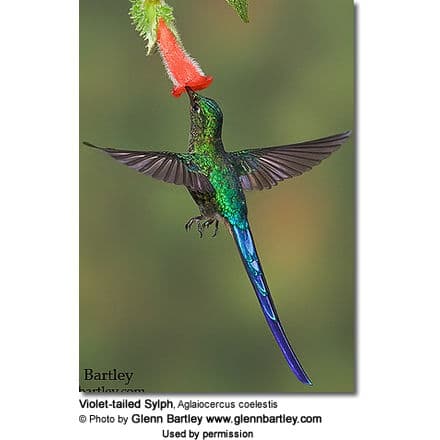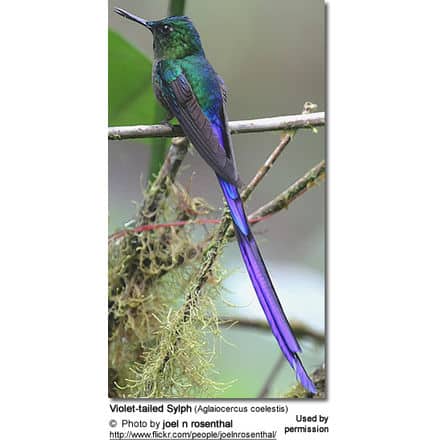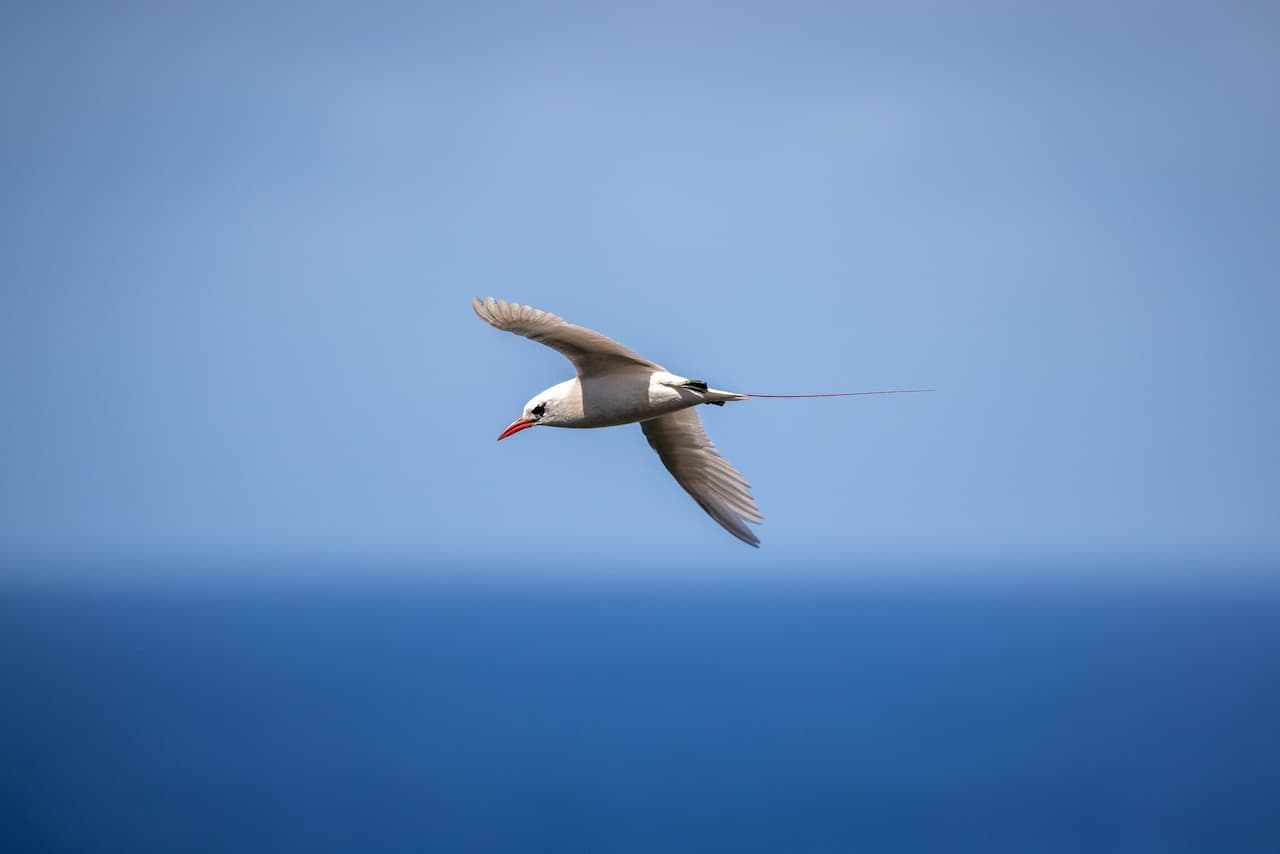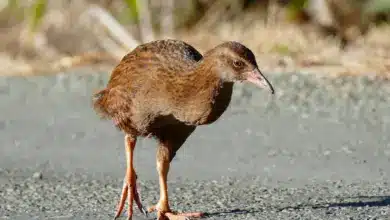Violet-tailed Sylph
The Violet-tailed Sylphs (Aglaiocercus coelestis) is a South American hummingbird that occurs naturally in Colombia and Ecuador at elevations from 300 to 2100 meters; however mostly above 900 meters.
These solitary birds typically remain low inside forest areas, close to small clumps of flowers.
Subspecies and Distribution:
- Aglaiocercus coelestis coelestis – Nominate Race (Gould, 1861)
- Range: Along the Pacific slope of the west Andes of both Colombia and north and central Ecuador
- Aglaiocercus coelestis aethereus (Chapman, 1925)
- Range: Southwest Ecuador, south of Zaruma
Description
Males are around 18 – 21 cm (~7 inches) and females about 9.5 – 9.7 cm (~3.8 inches) long – including their long tail. They weigh around 4.6 – 5.2 g.
The male has a long blue-violet tail. The rest of his plumage is mostly an iridescent green, with orangey-copper coloration on the throat and upper chest, and a blue crown.
The female is also mostly green. She has a blue crown, a rusty-orange abdomen, as well as a white upper chest band and tail tips,
In some instances, females lack the white upper breast band and then are easily confused with Long-tailed Sylph – however, an ID can be made by the color of their crown, which is blue in the Violet-tailed Sylph and green in the Long-tailed Sylph.

Nesting / Breeding
Hummingbirds are solitary in all aspects of life other than breeding, and the male’s only involvement in the reproductive process is the actual mating with the female.
They neither live nor migrate in flocks, and there is no pair bond for this species.
Males court females by flying in a U-shaped pattern in front of them. He will separate from the female immediately after copulation. One male may mate with several females. In all likelihood, the female will also mate with several males. The males do not participate in choosing the nest location, building the nest, or raising the chicks.
The nest is a suspended ball of moss that is fastened to leafy twigs with a side entrance. The average clutch consists of one white egg, which she incubates alone, while the male defends his territory and the flowers he feeds on. The young are born blind, immobile, and without any down.
The female alone protects and feeds the chicks with regurgitated food (mostly partially digested insects since nectar is an insufficient source of protein for the growing chicks). The female pushes the food down the chicks’ throats with her long bill directly into their stomachs.
As is the case with other hummingbird species, the chicks are brooded only the first week or two and are left alone even on cooler nights after about 12 days – probably due to the small nest size. The chicks leave the nest when they are about 20 days old.

Diet / Feeding
The Violet-tailed Sylphs primarily feed on nectar taken from a variety of brightly colored, scented small flowers of trees, herbs, shrubs, and epiphytes.
Hummingbird Resources
- Hummingbird Information
- Hummingbird Amazing Facts
- Attracting Hummingbirds to Your Garden
- Hummingbird Species
- Feeding Hummingbirds




